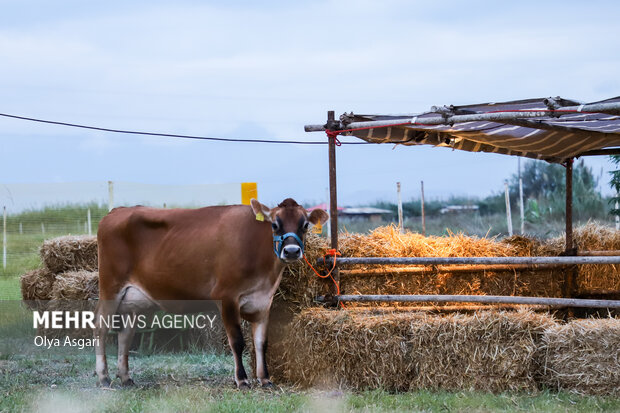Livestock production is the source of one third of greenhouse gas emissions

report Mehr reporter, Iran annually imports between 14 and 15 billion dollars of basic goods, which is in line with providing the people’s table. Part of this import is related to livestock inputs that need self-sufficiency. But climate change has created concerns for the inhabitants of the earth, which has caused scientists to look for solutions to solve this problem.
A part of greenhouse gas production is related to agriculture and livestock industry. Today, the way of animal husbandry in the world has undergone huge changes to minimize the damage of this sector. Hossein Shirzad, an analyst in the agricultural field of development, said in a conversation with Mehr reporter: “Food and feed competition is one of the complex challenges in the world of agriculture, and continuous climate change, land degradation, and lack of basic resources, including water, to realize food production systems. Stable is also expanding in parallel.
He added: It is predicted that the global demand for animal products will increase between 60 and 70 percent by 2050, and developing countries will have a large share in this increase. had.
He stated that currently about 800 million tons of grain (a third of the total grain production) is used in animal feed, he said: this number in the middle of the century Now it is expected to reach more than 1.1 billion tons. Most of the increase in food demand will be in developing countries, which are currently facing many food security challenges.
This agricultural development analyst continued: The additional feed needed to increase the demand for animal products, if provided through grains, will exacerbate food insecurity in these countries. . Feed is the main driver of livestock production and plays an important role for reproduction and breeding and animal health. In fact, livestock feed constitutes up to 70% of the total cost of livestock operation.
He added: The safety and quality of the food chain can be affected due to the close relationship between food and foodborne pathogens. Feeding with poor or unbalanced feed has a negative effect on the production, health and welfare of animals. Also, it diverts a significant portion of feed nutrients to waste products in the form of greenhouse gases (GHG).
The contribution of livestock industry in climate change
Shirzad, stating that the global increase in the number of livestock requires an increase in the resources used for their growth and feeding, stated that approximately 71% of the land is arable. It is residential and half of this land is used for agriculture. The production, processing and transportation of feed accounts for 45% of greenhouse gas emissions, and the share of intestinal methane is 39%, which also depends on the type of animal feed.
He continued: After carbon dioxide, methane is the second biggest cause of climate change. Livestock production, representing one-third of global emissions, is the largest source of anthropogenic methane, mainly from ruminant enteric fermentation and manure management.
This agricultural analyst stated that livestock deposit 70-95% of the nitrogen they receive as manure and urine, which leads to the washing of nitrates from the urine and the evaporation of ammonia. , nitrogen oxide, nitric oxide and N2 emission, it was mentioned: agriculture is responsible for 60% of the global warming potential of human nitrogen oxide. Agricultural lands dedicated to food production constitute 33% of the world’s total agricultural lands, and pastures also comprise 31% of dry lands.
Shirzad, referring to livestock water consumption, continued: Livestock consume 8% of the world’s water consumption, which is more than 90% of the water consumed in the livestock sector for irrigation. It is edible products.
The future of the world livestock industry
The former CEO of the Livestock Affairs Support Company, referring to the future of the world’s animal husbandry industry, stated: In the next few years, food production should be almost doubled to meet the needs of the world’s population and meet the global demand for protein. This has put pressure on the livestock sector to maximize production while reducing resource use, making animal feed the largest and most important component in the industry to provide healthy and sustainable animal protein.
Shirzad stated: Currently, the biggest challenge for nutritionists in the feed industry is reducing this indigestible fraction and maximizing feed efficiency based on nutritional factors and It is an economy that is often different and may be unique to each production system.


